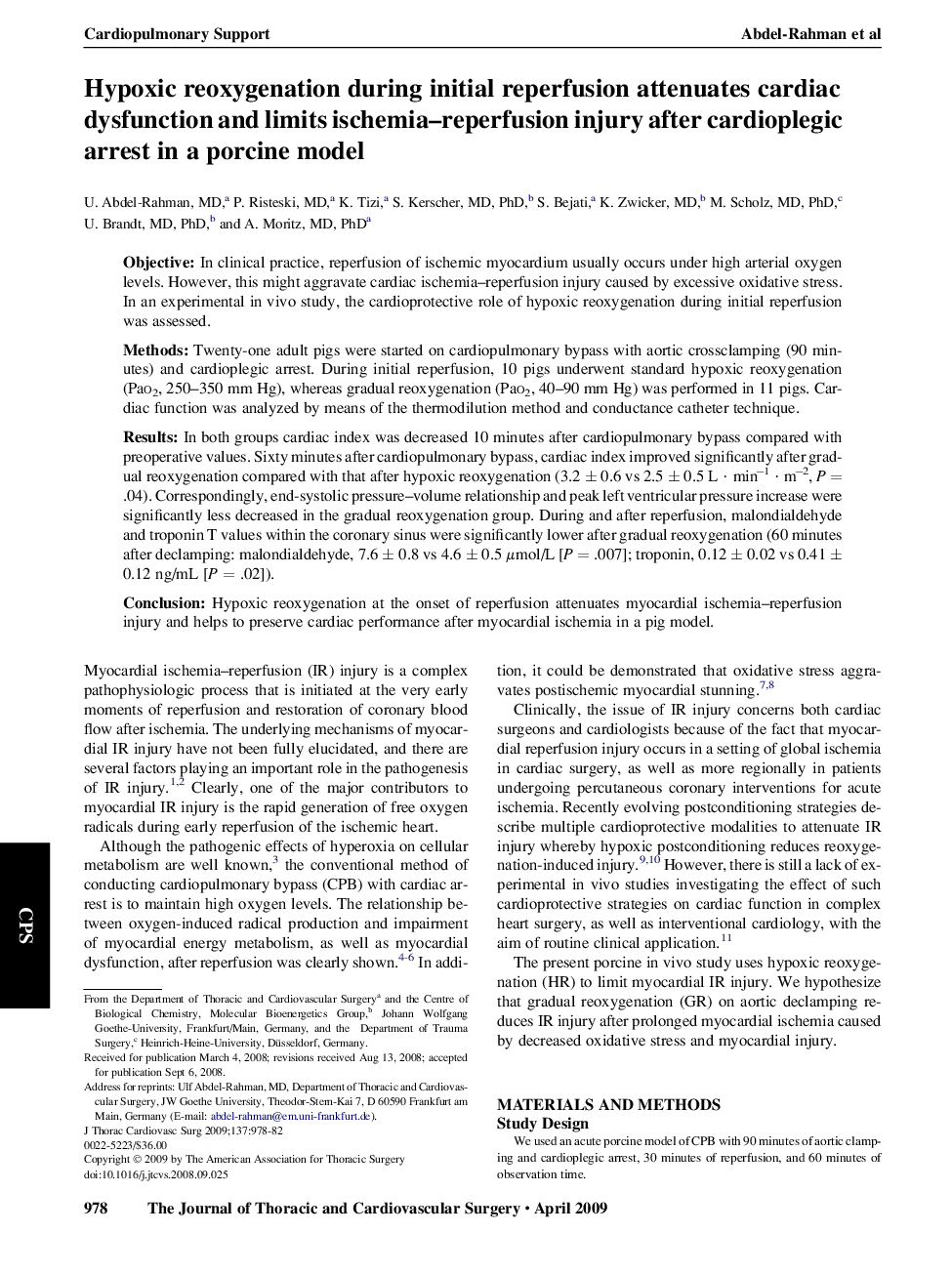| Article ID | Journal | Published Year | Pages | File Type |
|---|---|---|---|---|
| 2982392 | The Journal of Thoracic and Cardiovascular Surgery | 2009 | 5 Pages |
ObjectiveIn clinical practice, reperfusion of ischemic myocardium usually occurs under high arterial oxygen levels. However, this might aggravate cardiac ischemia–reperfusion injury caused by excessive oxidative stress. In an experimental in vivo study, the cardioprotective role of hypoxic reoxygenation during initial reperfusion was assessed.MethodsTwenty-one adult pigs were started on cardiopulmonary bypass with aortic crossclamping (90 minutes) and cardioplegic arrest. During initial reperfusion, 10 pigs underwent standard hypoxic reoxygenation (Pao2, 250–350 mm Hg), whereas gradual reoxygenation (Pao2, 40–90 mm Hg) was performed in 11 pigs. Cardiac function was analyzed by means of the thermodilution method and conductance catheter technique.ResultsIn both groups cardiac index was decreased 10 minutes after cardiopulmonary bypass compared with preoperative values. Sixty minutes after cardiopulmonary bypass, cardiac index improved significantly after gradual reoxygenation compared with that after hypoxic reoxygenation (3.2 ± 0.6 vs 2.5 ± 0.5 L · min−1 · m−2, P = .04). Correspondingly, end-systolic pressure–volume relationship and peak left ventricular pressure increase were significantly less decreased in the gradual reoxygenation group. During and after reperfusion, malondialdehyde and troponin T values within the coronary sinus were significantly lower after gradual reoxygenation (60 minutes after declamping: malondialdehyde, 7.6 ± 0.8 vs 4.6 ± 0.5 μmol/L [P = .007]; troponin, 0.12 ± 0.02 vs 0.41 ± 0.12 ng/mL [P = .02]).ConclusionHypoxic reoxygenation at the onset of reperfusion attenuates myocardial ischemia–reperfusion injury and helps to preserve cardiac performance after myocardial ischemia in a pig model.
